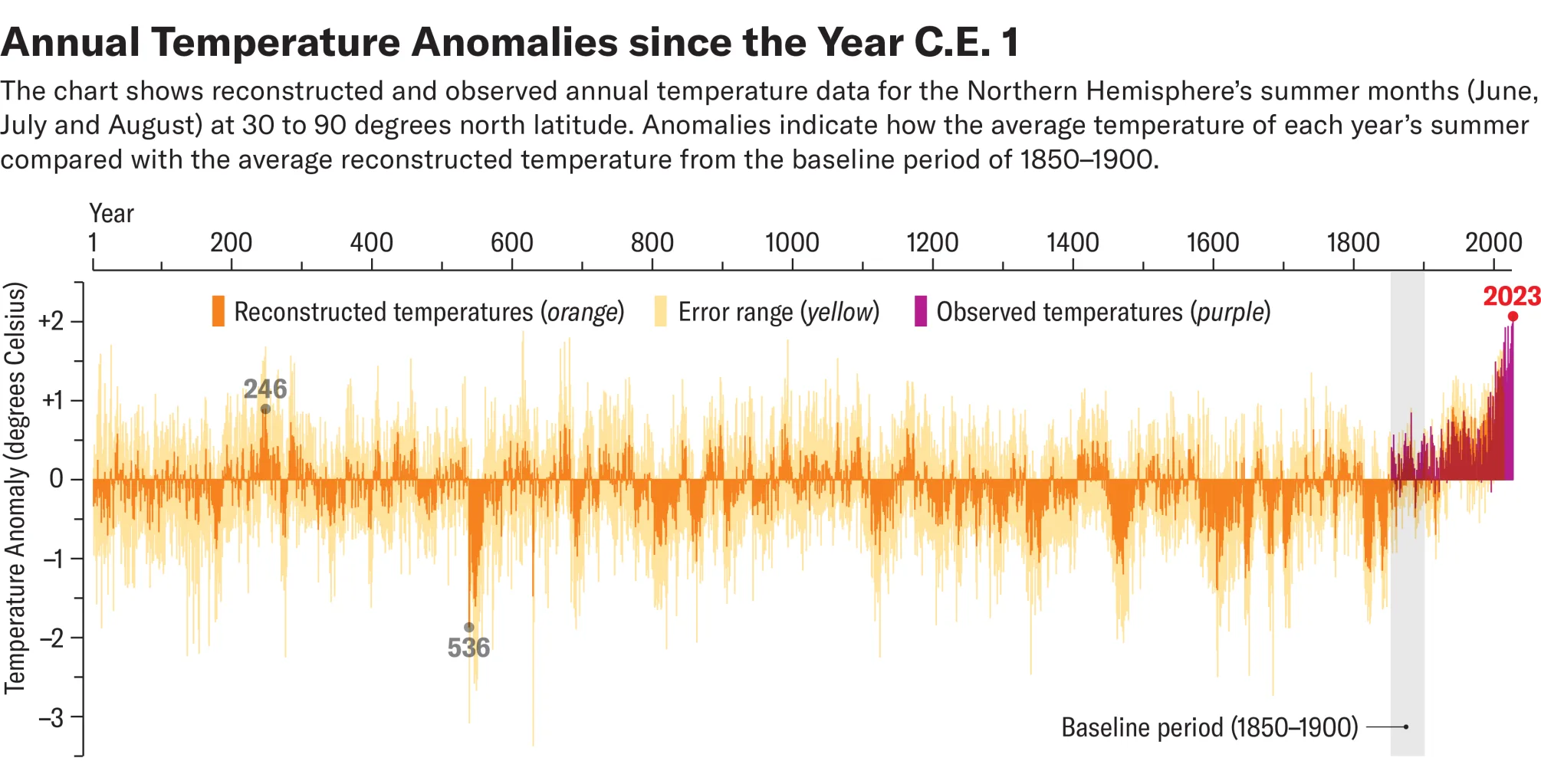May 14, 2024 By Andrea Thompson
“Ancient tree rings show that the summer of 2023 was the hottest in the past 2,000 years because of human-caused climate change
“Heat wave after punishing, record-shattering heat wave gripped regions all over the Northern Hemisphere this past summer. They contributed to the globally hottest month, weeks and day ever in more than 100 years of direct measurements and to 2023 being the hottest year on record by a wide margin. Now a new study shows that that summer in the Northern Hemisphere was the hottest in the past 2,000 years—a marker of how much the world has already warmed and how urgently we need to drastically reduce greenhouse gas emissions, the study’s authors say.
“The findings were published on Tuesday in Nature and were based on reconstructions of ancient temperatures from tree rings. They show that beyond being 0.15 degree Celsius hotter than the previous record-setting summer of 2016, the summer of 2023 was at least 0.5 degree C hotter than the warmest summer that occurred before humans began raising the global temperature by burning fossil fuels. “The trees tell us that 2023 was exceptionally warm,” says study co-author Jan Esper, a dendrochronologist and climate scientist at Johannes Gutenberg University Mainz in Germany.
“Esper and his co-authors were motivated to find 2023’s long-term climate ranking based on both how exceptional the heat overall how the media and some experts had asserted that certain days and weeks during that season were likely the hottest in 120,000 years. But the climate records from ice sheets and sediment that go back that far have a resolution of about 300 years, Esper says, so we cannot make a meaningful comparison from the records to individual days, weeks or even years.
“So the researchers turned to tree rings. Unlike direct measurements by humans, which only extend back a little more than 100 years and are often limited to just a few places, mostly in Europe, trees can provide indirect temperature data that go back thousands of years. Trees growing in temperate climates produce discernable rings as they grow each year—and how much they grow is related to the seasonal temperatures they experience.
“There are still limitations to these paleoclimate records: tree ring records from the Southern Hemisphere are lacking, and tropical trees don’t display the same annual rings as temperate trees because they don’t experience winter. So Esper and his co-authors confined their analysis to the area of the Northern Hemisphere between 30 and 90 degrees north latitude…”

Read the full article here.
Leave a Reply